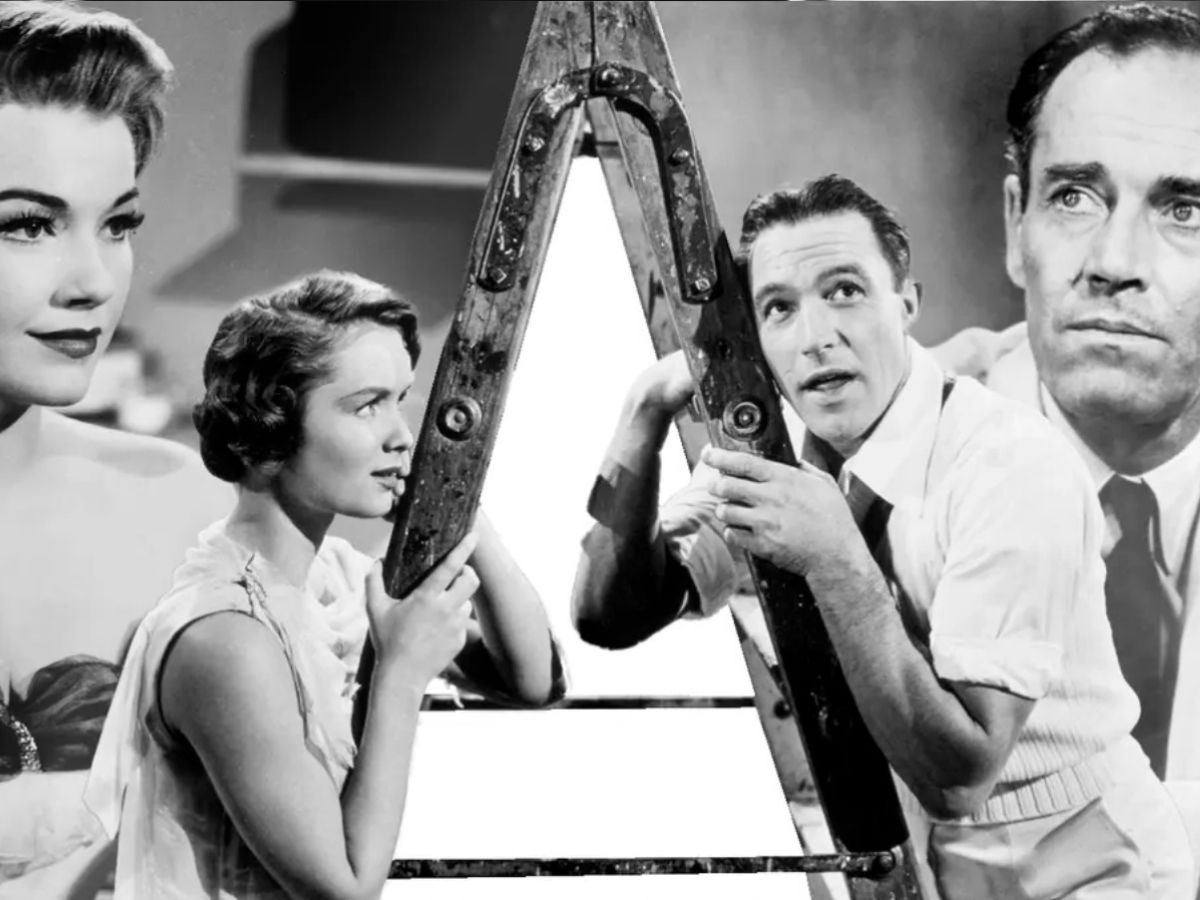
1950s movies hold a special place in the heart of cinema history, marking a decade where Hollywood blossomed with innovation, color, and storytelling depth. This era introduced audiences to groundbreaking genres, iconic stars, and technological advancements that shaped the future of filmmaking. From the rise of method acting to the advent of widescreen formats, the 1950s were a time of artistic exploration and commercial success. Whether you're a film buff or just curious about this pivotal period, understanding these 22 facts will deepen your appreciation for the classics and the decade that made them possible. So, grab your popcorn and let's rewind to a time when movies were not just entertainment but cultural milestones.
The Golden Age of Hollywood
The 1950s are often referred to as the Golden Age of Hollywood, with the film industry experiencing significant growth and transformation. This era was marked by the emergence of color films, the rise of television, and the beginning of the end for the studio system that had controlled Hollywood for decades.
-
Technicolor Triumphs: By the 1950s, Technicolor, a three-color film process, had become the standard for Hollywood films, bringing vibrant color to the big screen and enhancing storytelling.
-
Introduction of Widescreen: To compete with television, movies began to be shown in widescreen formats like CinemaScope, which debuted in 1953, offering audiences a new, immersive viewing experience.
-
Rise of Method Acting: Actors like Marlon Brando and James Dean popularized method acting, a technique that encouraged performers to fully embody their characters, leading to more intense, realistic performances.
Iconic Films and Directors
The 1950s produced some of the most iconic films and directors in cinema history, leaving a lasting impact on the industry and audiences worldwide.
-
Alfred Hitchcock's Mastery: Alfred Hitchcock, known as the "Master of Suspense," directed several classics during this decade, including "Rear Window" (1954) and "Vertigo" (1958), films that remain influential to this day.
-
Disney's Animated Features: Walt Disney released "Cinderella" (1950), "Alice in Wonderland" (1951), and "Peter Pan" (1953), enchanting children and adults alike and setting the standard for animated feature films.
-
Epic Historical Dramas: The decade saw the production of grand historical epics such as "Ben-Hur" (1959), which won a record 11 Academy Awards, showcasing the industry's ability to create vast, spectacular film experiences.
Social and Cultural Impact
Movies in the 1950s didn't just entertain; they also reflected and influenced the social and cultural landscape of the time.
-
Teen Rebellion: Films like "Rebel Without a Cause" (1955) tapped into the burgeoning youth culture and the theme of teenage angst and rebellion, resonating with young audiences across America.
-
Cold War Paranoia: The fear of nuclear war and communism was reflected in science fiction films of the era, such as "The Day the Earth Stood Still" (1951), which used extraterrestrial visitation as a metaphor for the threat of nuclear annihilation.
-
Changing Gender Roles: Movies began to explore and sometimes challenge traditional gender roles, with strong female characters and narratives questioning societal norms.
Technological Innovations
The 1950s were a time of significant technological advancements in filmmaking, which expanded the creative possibilities for directors and enhanced the movie-going experience.
-
3D Movies: The first wave of 3D films hit theaters, with "Bwana Devil" (1952) being promoted as the first full-length 3D color film, attracting audiences with the novelty of three-dimensional cinema.
-
Stereo Sound: Films started to use stereophonic sound systems, greatly improving audio quality and creating a more immersive experience for viewers.
-
The Advent of Drive-In Theaters: Peaking in popularity during the 1950s, drive-in theaters offered a unique way to watch movies from the comfort of one's car, becoming a cultural phenomenon.
Legacy and Influence
The influence of 1950s cinema extends far beyond its decade, shaping the film industry and pop culture in profound ways.
-
Foundation for Modern Blockbusters: The spectacle and scale of 1950s epics laid the groundwork for the blockbuster films that would dominate the box office in later decades.
-
Inspiration for Future Filmmakers: Directors like Steven Spielberg and George Lucas were inspired by the films of the 1950s, which influenced their own groundbreaking work in cinema.
-
Preservation of Classics: Many films from the 1950s have been meticulously restored and preserved, allowing new generations to experience these classics as they were meant to be seen.
-
Cultural Icons: Characters and scenes from 1950s movies have become iconic, ingrained in global pop culture and recognizable to people who may have never seen the films themselves.
-
Film Festivals and Retrospectives: Annual film festivals and retrospectives continue to celebrate the films of the 1950s, highlighting their artistic and historical significance.
-
Influence on Fashion and Design: The styles and designs seen in 1950s films have had a lasting impact on fashion and interior design, with many looks becoming timeless classics.
-
Adaptations and Remakes: Numerous 1950s films have been remade or adapted into new forms of media, including television shows, stage plays, and modern movies, demonstrating their enduring appeal.
-
Academic Study: The 1950s are a popular subject of academic study, with scholars analyzing the films of the era for their artistic merit and cultural impact.
-
Global Influence: Beyond Hollywood, the 1950s were a pivotal decade for world cinema, with filmmakers in Europe, Asia, and elsewhere producing works that would influence global film narratives and techniques.
-
Evolution of Film Criticism: The 1950s saw the emergence of more sophisticated film criticism, with critics and audiences beginning to appreciate cinema as a form of art, not just entertainment.
A Final Reel on 1950s Cinema
Diving into the 1950s movies has been like stepping into a time machine, giving us a glimpse into a decade where cinema was not just entertainment but a reflection of society's hopes, fears, and dreams. From groundbreaking effects in The War of the Worlds to the heart-wrenching drama of On the Waterfront, these films have left an indelible mark on the fabric of film history. They've shown us that, despite technological advancements, the core of storytelling—emotion, conflict, and human connection—remains unchanged. As we look back, let's appreciate the pioneers who pushed boundaries, setting the stage for the cinematic wonders we enjoy today. Their legacy, captured in reels of black and white, continues to inspire filmmakers and audiences alike. So, here's to the 1950s—a golden era that shaped the future of film in ways that still resonate with us.
Was this page helpful?
Our commitment to delivering trustworthy and engaging content is at the heart of what we do. Each fact on our site is contributed by real users like you, bringing a wealth of diverse insights and information. To ensure the highest standards of accuracy and reliability, our dedicated editors meticulously review each submission. This process guarantees that the facts we share are not only fascinating but also credible. Trust in our commitment to quality and authenticity as you explore and learn with us.


